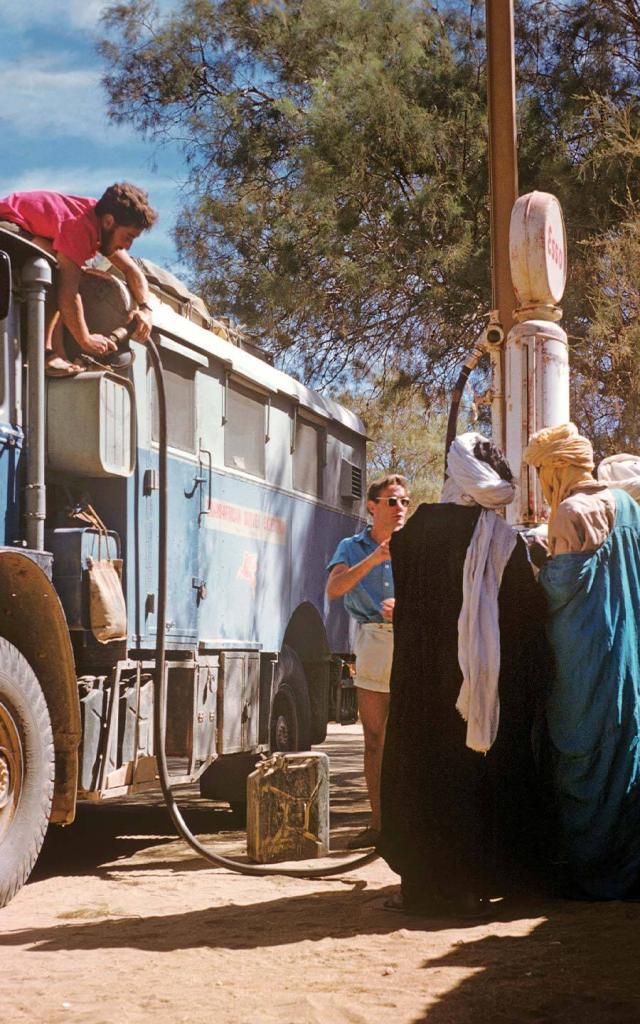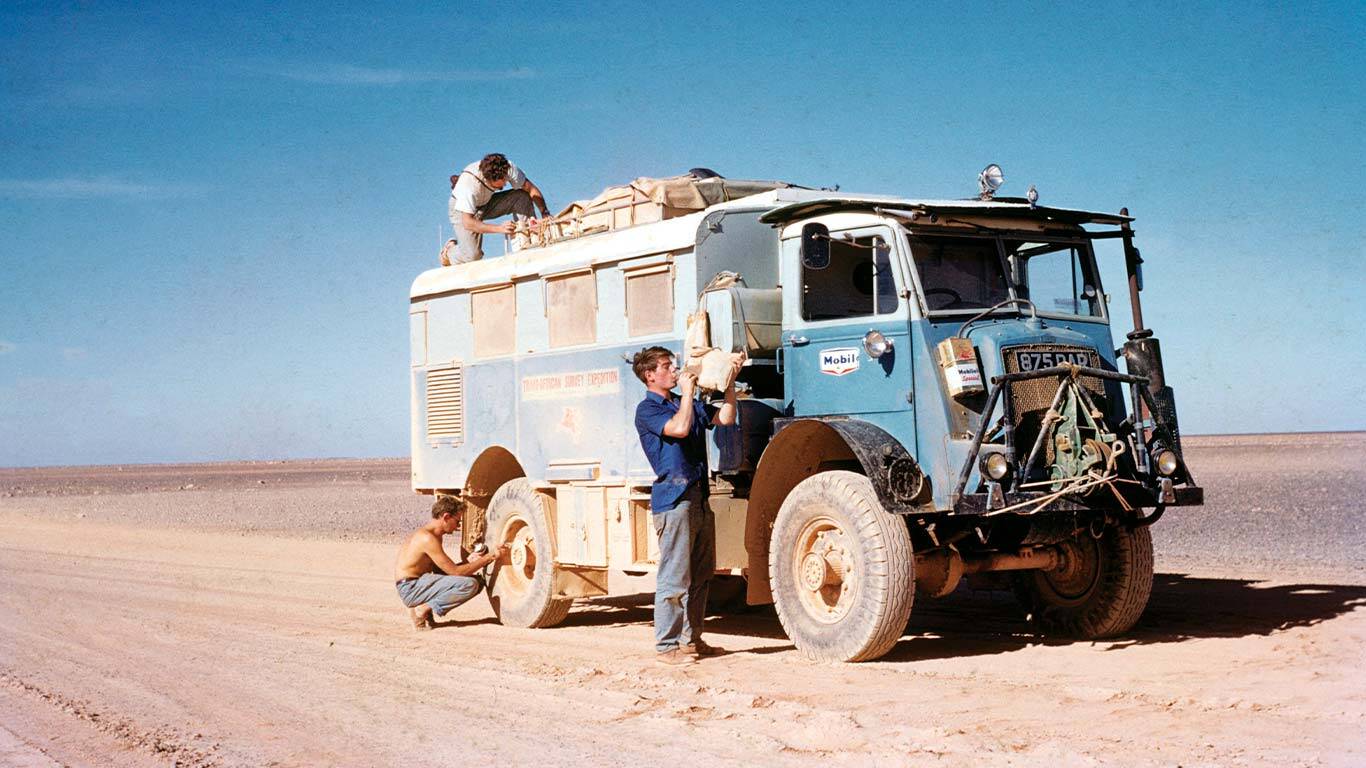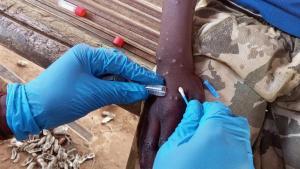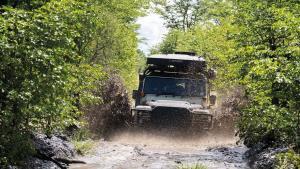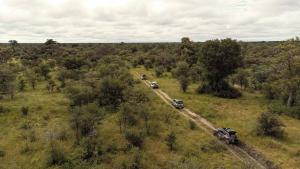It’s the desert I most remember. Its immensity and utter silence have lingered in my memory over many years. On this, our first night away from humanity, we hiked a short distance from the truck. It appeared so tiny and insignificant, yet it was our home, our lifeline, and our sole means of survival in this harsh yet spellbinding landscape. Overhead, the immensity of the heavens stretched unimpeded to the horizon in every direction, ablaze with stars beyond imagining—an affirmation of infinity. The silence was absolute. The only sounds were our breathing and the ticking of my watch. A pebble, carelessly tossed, shattered the stillness like the smashing of a pane of glass, and then it returned, embracing us like an invisible cloak.
More than 60 years have passed since that memorable moment. There were three of us: Collyn, Rex, and myself. We had met at the de Havilland Aircraft Company in Hatfield, England. Collyn was an electronics engineer while Rex and I were apprentices; we shared an interest in vintage cars and had become friends.
Collyn subsequently left de Havilland to join the research department of Bedford/Vauxhall Motors while I, after my apprenticeship, went to what was then called Southern Rhodesia to become a learner miner. Two years later, in 1959, after I had hitchhiked from Rhodesia to Kenya, I was invited on a journey Collyn had planned to drive from England to South Africa and back with him and Rex. There could only be one response to such an invitation.
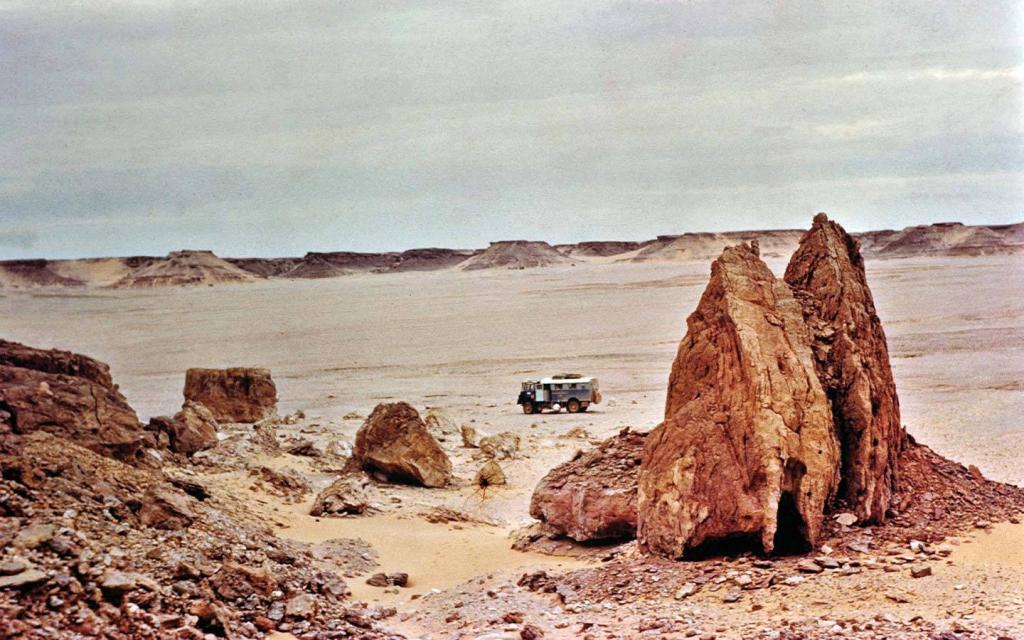
It was entirely Collyn who conceived and organised the trip, inspired by the lack of solid data about road conditions across Africa—information sorely needed for realistic testing of vehicles being built for that continent. His employer could not justify financial support for such a venture but made available an unused Bedford QLR 4WD truck for a nominal £100.
Collyn set about researching sponsors for what he called the TransAfrica Survey Expedition. The most vital of these was Mobil Oil, which provided political assistance, and fuel and oil for the entire expedition. The British Army supplied 100 kilograms of experimental dehydrated food that proved excellent.
What I brought to the table was some experience of Africa; a rudimentary knowledge of French, Chilapalapa, and Swahili; plus a small amount of money, which turned out to be rather less than my fellow travellers had hoped. Between us, we had a total of about £550, but decided to keep most of it for emergencies—such as how to get home should the truck break down.
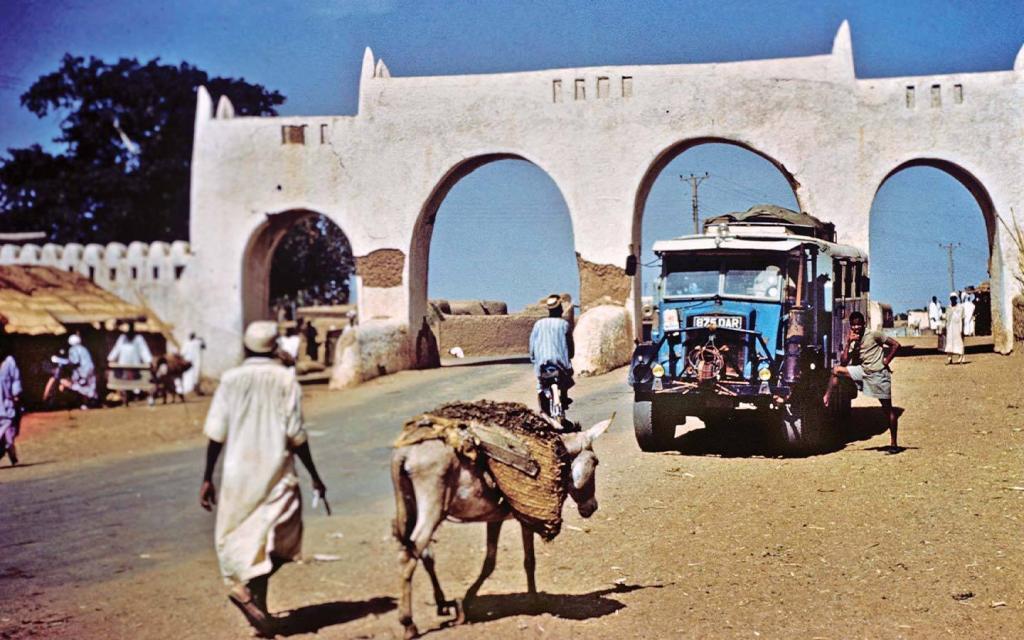
The QL Bedford was designed just prior to WW2 as a versatile off-road military vehicle able to carry three tonnes virtually anywhere. With a fully laden weight of seven tonnes, the QL was powered by a 3.5-litre petrol engine designed in the early 1930s by Chevrolet. This provided a rarely attained (and governed) top speed of 32 mph (about 50 kph). Whilst a fully laden QL makes an overladen oxen-drawn timber wagon seem like a Ferrari, it had a meager bottom gear ratio of 104:1. Even a minor gradient would slow it to walking pace. Still, given enough time, a QL could virtually climb the side of a house. Ours was the rare QLR version. It was built in early 1940 as an emergency aircraft runway control hub but was never used. The QLR had a massive centre-mounted winch, a 12-volt, 600-amp dynamo the size of a large garbage bin, and a giant air compressor. Front and rear axles were driven by separate power shafts from the huge centre-mounted transfer box. The spacious but very heavy metal body was heat-insulated, with opening windows protected by sliding bulletproof shutters. We converted the rear into crude living quarters.
The QLR originally had two 180-litre fuel tanks, and we added three more the same size, plus five 20-litre jerry cans. The resultant 1,000 litres (about 1.2 tonnes) provided a safe 3,500-kilometre range for the Saharan crossings and the ability to cross Europe without refuelling. We carried 700 litres of water (another 700 kilograms). Cooking was via a couple of paraffin-fuelled Tilley pressure stoves. Internal lighting was 12-volt electric.
Apart from preserved food and a large quantity of spares, we also carried a typewriter, letter-headed notepaper, and a selection of rubber stamps with multi-coloured pads to prepare suitable documents for border crossings. The issue date for some of the papers had to be within six months of being presented, which was simply not possible given our anticipated travel time to reach that spot.

I joined Collyn and Rex in Paris, where Collyn picked me up at the Gare du Nord in what seemed to me to be a truly humongous truck painted bright blue. I had never driven anything so large and was a bit startled by the sight of it. Obtaining permission to cross the Sahara involved two months of battling French bureaucracy in the Paris Surrete. Hugely assisted by Mobil Oil’s political clout, they eventually relented, and permits were granted, conditional on our driving in Algeria only outside the curfew hours of 4:00 p.m. to 9:00 a.m.
When we reached the heavily fortified border post between Morocco and Algeria, we were immediately directed to an inspection pit where the truck was given a once-over by teams of both police and military. Meanwhile, we were all hustled off to a building where we were thoroughly body searched and our papers examined. The first 100 meters after leaving the post was along a road bordered by barbed wire with a machine gun trained on us for the entire distance. Welcome to Algeria, we thought. A curfew was strictly enforced at 4:00 p.m., and we spent every night in a military camp where we shared an evening meal with the French soldiers—a hearty feast served with carafes of red and white wine that impressed us, the young lads, to no end.
Our route took us through the beautiful coastal cities of Oran and Algiers, which looked exactly like France to our youthful eyes. Along the roads, we passed toppled power pylons and military Jeeps equipped with a wire-cutting device to protect the occupants from being decapitated by wires strung at head height across the roads. Roadside signs in French proclaimed that Algeria was part of France and it was her right and duty to see it remained so.

We contacted the Mobil office in Algiers, without whose help it would have been extremely difficult (if not downright impossible) to obtain our permits to cross the Sahara.
We finally set off south. The QLR was beginning to run very rough with a considerable loss in power, which could not have happened in a worse place as we started the climb up the rugged Atlas Mountains. We passed notices saying it was forbidden to stop and were overtaken by gigantic Berliet trucks driven by Arab drivers banging on their doors with their fists and shouting Vite! Vite! This area was reckoned to be one of the most dangerous in the whole of Algeria. At every bridge was a guard post with an entrance door pockmarked with bullet holes, high up and accessible only by a ladder pulled up after use. In his North country accent, Rex gloomily remarked, “Now I know what a sitting duck feels like.”
Eventually, we reached the high point at 1,200 metres (3,900 feet), where temperatures were only a few degrees above freezing. We set about trying to figure out what was wrong with the engine and concluded that the problem must be internal. We parked in an alley that seemed reasonably secure and removed the cylinder head for the first of what ultimately turned out to be five times. On this occasion, three of the exhaust valves were completely burnt out, with one having a great split. It took hours of work to replace and grind the valves and recut the valve seats. Fortunately, we had the parts and knowledge to diagnose and fix the problem, which would continue to plague us for the rest of the trip.
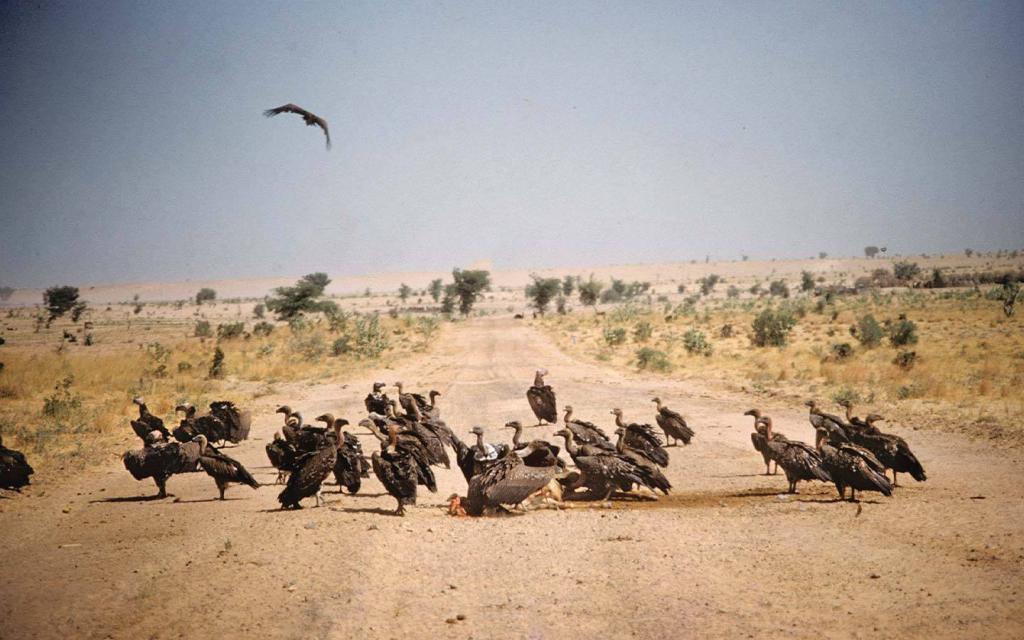
Not too far south of here, we reached the outskirts of the desert. Just beyond the town of Laghouat, we passed a road sign that read “Capetown 13,000 kilometres.” We were now finally free of security restrictions, and a weight was lifted from our shoulders. Ironically, the great Sahara Desert—covering an area bigger than the contiguous USA and considerably larger than Australia—had become a relatively safe area compared to the settled and developed coastal zones.
At that time, the Sahara was extremely well administered by the French. We had to check in at each oasis settlement or town where our permits were examined. Before continuing, we had to provide an ETA for arrival at the next checkpoint. If we failed to show up within the agreed interval after that time, a search party would be organised to look for us. They would charge for the search, but at least you would be alive to pay for it.
North of the town of In Salah, we crossed the seemingly endless, stony Tademaït Plateau, which, after two days of teeth-rattling corrugations, terminated abruptly without any warning. Here we stopped for the night. I slept outside on a camp bed with my head towards the truck, so it was out of sight, and when I awoke the following morning, I was greeted by a magical view over a landscape imbued by the rosy fingers of dawn.
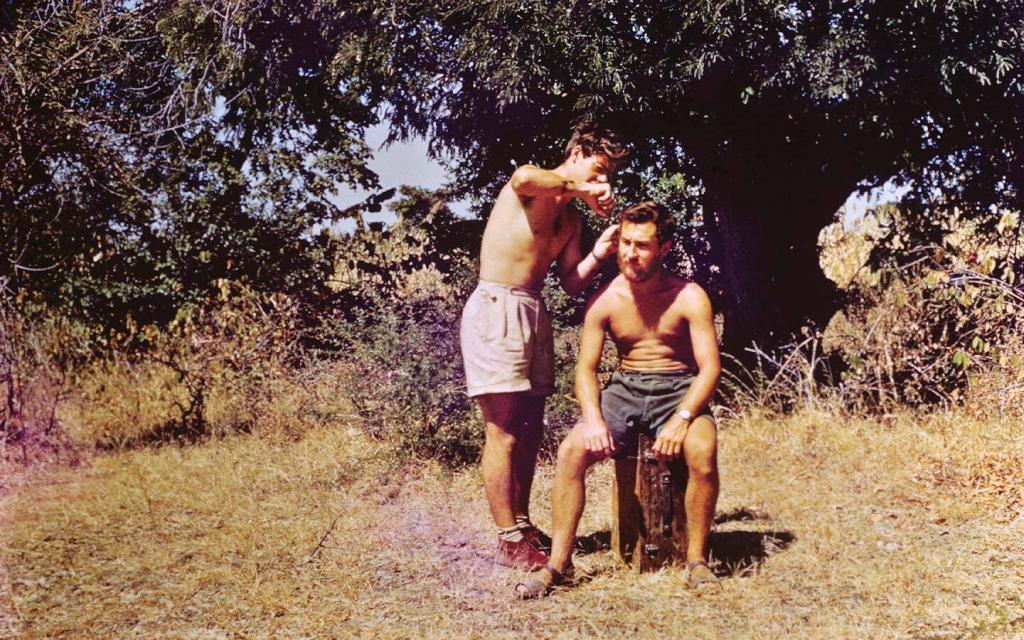
Further south, at an elevation of 1,320 metres (4,330 feet) set in the moonlike Ahaggar Mountains, Tamanrasset is an important oasis city and the capital of Tamanrasset Province of southern Algeria. Built entirely of mud, it has for centuries been the trading centre for camel caravans from Kano, Lake Chad, Agadez, and Zinder, all of which we would visit. It was originally established as a military outpost to guard the trans-Saharan trade routes, and a relaxed but efficient atmosphere remained.
Once past Tamanrasset, the track gradually lost elevation through rocky terrain and entered an area of sand where there was no defined track—more a preferred direction of travel delineated by slim posts about 10 kilometres apart. Navigating by compass or the direction of the sun in what you hoped was the correct general direction, the next post could usually be spotted via binoculars from the QLR’s handy gun turret when about midway between the two. This was a tricky part of the crossing as it was often necessary to veer to the left or right for several kilometres to skirt soft sand. It was thus vital to remember whether one had veered to the left or the right of the presumed line between the route markers. We still managed to get stuck and had to dig out using our sand mats.
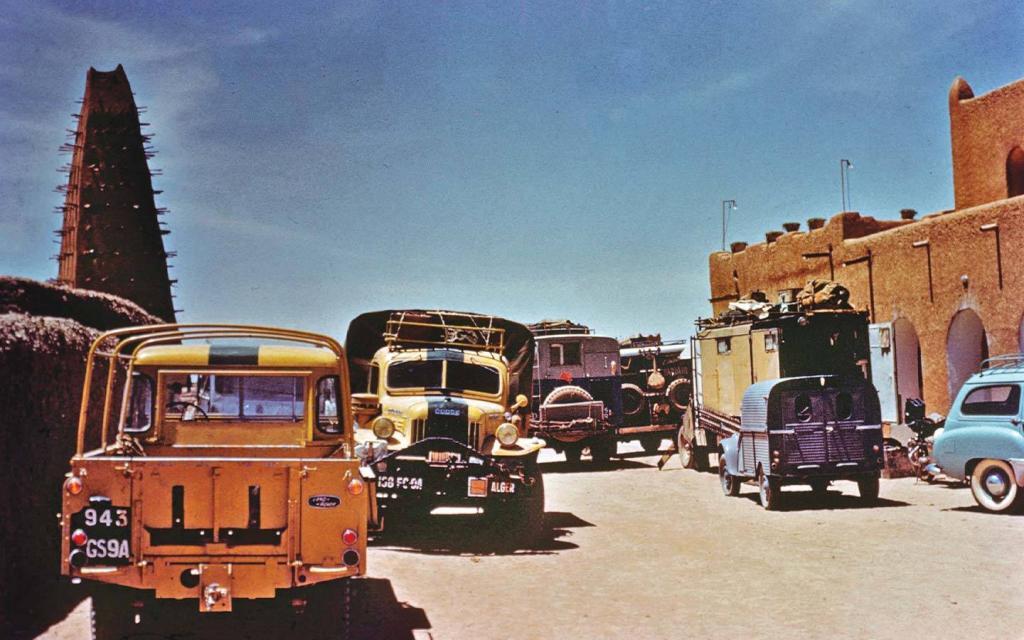
When miles from the nearest oasis town, we would come across small camel caravans crossing our southerly track at right angles. We would always stop at these encounters, and they would often ask for such items as water or maybe matches. These we would supply if we could, and they always gave something in return—perhaps a piece of rock-hard cheese made from camel milk or, on one occasion, an enamel basin of still-warm milk. The unwritten law of the desert was that if you saw another vehicle or person stationary, you would always stop to check on the other party’s condition.
In Niger’s Agadez, which dates to the 15th and 16th centuries, we saw many Tuareg, a nomadic people of the desert who practice a distinctive brand of Islam. Many make daily prayers to Allah, but strict adherence to other religious requirements is rare. Tuareg men begin wearing a veil at age 25, which conceals the entire face, excluding their eyes. This veil is never removed, even in front of family members. It is believed that men began wearing the dark blue veil to protect their faces from the Sahara sands. Tuareg women are not veiled.
The desert gradually morphed into the Sahel, a vast semi-desert area south of the Sahara, stretching from the Atlantic to the Red Sea. We began to see more people and animals even as the condition of the track deteriorated. Driving was arduous, and we worked two-hour shifts. The track would drop abruptly into dry river beds, and after 12 hours of driving, we covered 159 miles at an average speed of 13 mph. Swarms of locusts filled the sky and battered against the windshield. Collyn bitterly complained, “Don’t they know this is the main road to Europe!” Obviously, this matter did not figure very highly in the priorities of the locals.
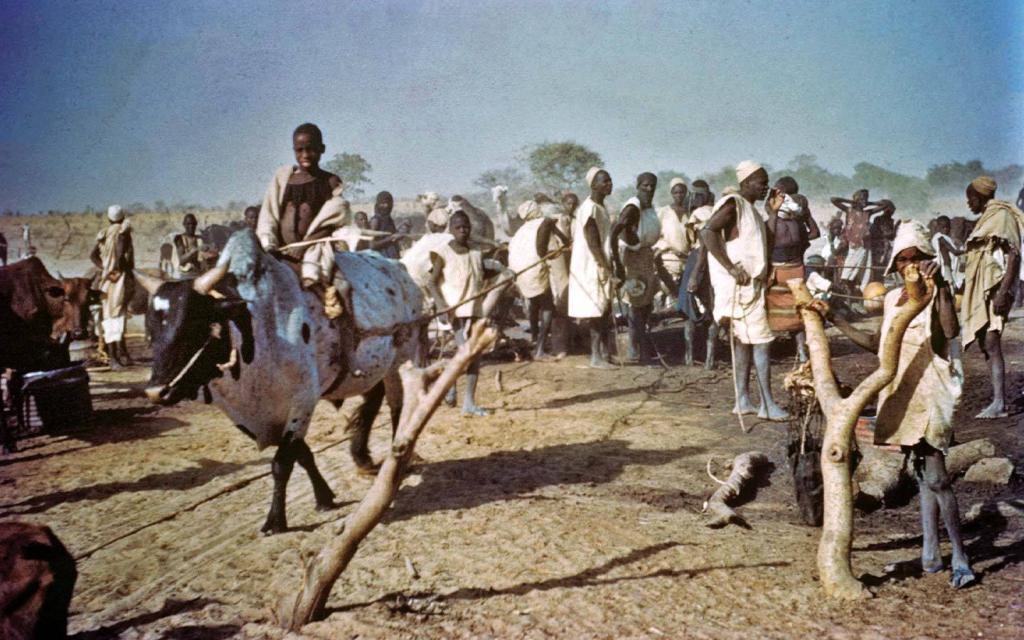
We entered Niger at Zinder and continued on to Kano in Nigeria. After so many miles in French-controlled territory, it was strange to see road signs in English, and we were unsure which side of the road to drive. The procedure was to drive in the middle and then, depending on which country you were in, swerve right or left when meeting oncoming traffic. Crossing borders was a game of chicken: you let the other guy dodge first and then acted accordingly.
Nigeria was within a few months of independence from Britain, so we had to tread carefully when addressing officials to avoid any hint of giving instructions. This turned out to be a serious problem at the Kano Post Office, where we went to collect our mail. We were initially told that there was none for us, but we noticed that the mail, supposedly sorted by addressee’s name, was all jumbled up in no order whatsoever. Any comment on our part was taken as unacceptable criticism, which resulted in a total lack of cooperation.
Our map showed a direct road going straight to Fort-Archambault, but when we arrived at the banks of the Logone River, we found no bridge, ferry, or river crossing—just a bunch of unclothed villagers not at all pleased at our presence. We were persuaded to seek an alternative route which led us down a track where the grass was higher than the windshield, and we got stuck in a bog.
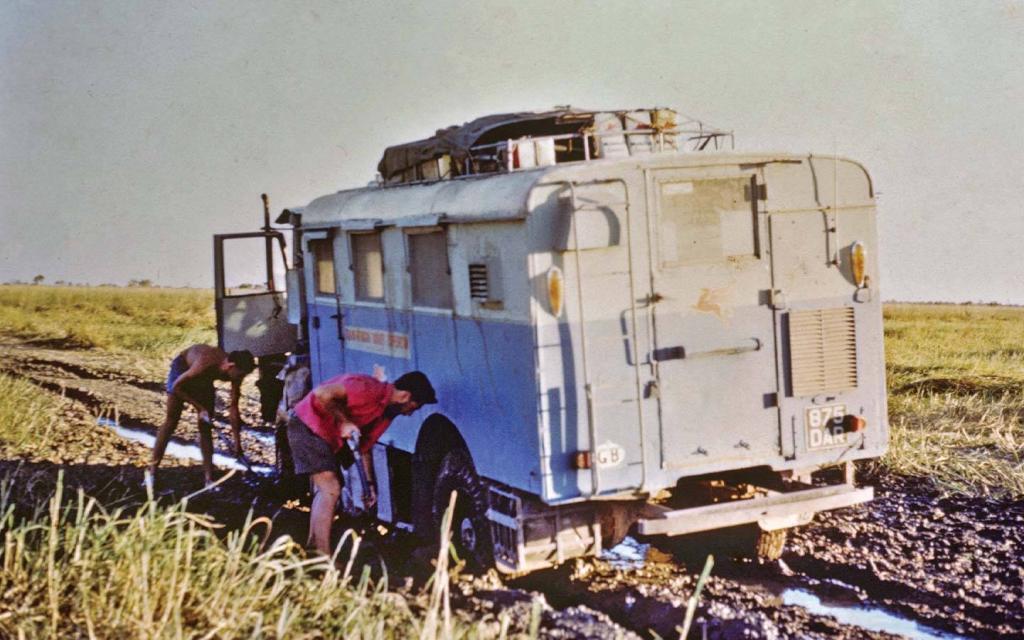
Along this unplanned diversion with Collyn at the wheel, Rex and I were riding on the roof rack when we spotted an abrupt dip into a dried river bed directly ahead. As the truck failed to slow down, we realised at the last minute that Collyn had not seen it, and we hung on for dear life. We hit the dip at about 15 mph and everything, including Rex and myself, became airborne, resulting in a total shambles inside the truck. After recriminations and sorting ourselves out, we continued for about a mile when I asked Rex lightheartedly whether we still had a spare wheel. Rex crawled back to take a look and reported it was missing. We turned back and spent more than an hour searching for it in the long grass but never found it. According to Sod’s Law, we had our first puncture the following day and were forced to deal with it right there and then. It was very difficult to break the tyre free from the wheel without proper equipment. At one point, the three of us linked arms and simultaneously commenced jumping up and down in unison to try to budge it. That method failed miserably, but we eventually succeeded with the usual hammers and tyre levers.
We encountered many local vehicles broken down along the way, many of which we tried to help. The most serious was a truck with two halves of a broken chassis resting on the ground. We jacked it up, pulled the two halves together with our winch, and fashioned a fishplate to hold the two halves together. We had no power tools, so holes had to be drilled with a “gut-buster” hand drill. The driver was very grateful and gave us two live chickens and some grapefruit and wanted to buy us some beer but the shop was closed.
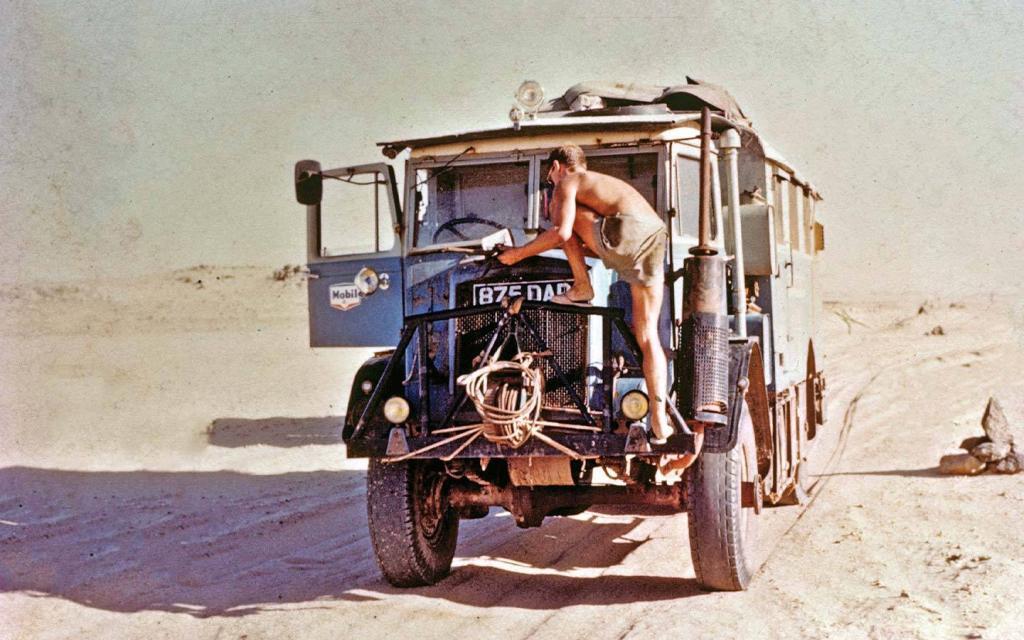
As we headed south, we began to encounter more rivers. The larger ones were crossed by ferries, two to three boats tied alongside each other and straddled by a platform with a ramp at each end. Other rivers had very dodgy timber bridges. On rare occasions, when a weight limit was shown, it was always much less than the weight of the QLR. We had little choice but to take a chance because a different route would have meant a diversion of over 1,000 miles, and there was no guarantee that other bridges would be any better. Whoever’s turn it was to drive took the wheel; one of us would guide the driver while the other stood by with a camera to take pictures of what seemed likely to be a surefire disaster. One bridge was shared with a railway, and we had to make sure no train was coming.
In the Congo, a direct contrast to the desert we had been in a mere four weeks earlier, we were startled on one of our first nights by a series of disturbingly loud, creaking cries, released at ever-closer intervals, culminating in blood-curdling shrieks that sounded exactly like someone being murdered. We were distressed to be in our truck all alone, surrounded by dense jungle in this forest of noise. The alarming sounds turned out to be made by a small animal called a rock hyrax, about the size of a rabbit. Bizarrely, their nearest relative is the elephant.

We also met some Pygmies who lived in the jungle, whose average height was around 5 feet tall. Armed with tiny bows about 2 feet long with the “string” (a flat strip from bamboo) about 8 inches from the bow, their primitive weapons were surprisingly accurate and could hit a cigarette from 20 yards. Select arrows were tipped with poison. The men spoke some Swahili and explained that they tested the poison’s strength by nicking a leg so the blood ran down, then put a knife edge below the nick, touching the poison to the blood trail below to see if it coagulated. We were struck by the fact that we would have been at a loss surviving in their world—just as it would have been for them to survive in ours.
As we approached the eastern fringes of the jungle, the road began to climb, and we came across plantations of coffee, papayas, and bananas. In the far distance, we caught glimpses of the snow-covered peaks of the Ruwenzori Mountains (also known as the Mountains of the Moon) which rise to heights of over 4,800 metres (16,000 feet). As we emerged from the jungle, it stretched below us like a vast green carpet reaching the distant horizon. A concrete sign marked the equator at 7,200 feet. The truck was not happy at this elevation and began to misfire and splutter in indignation. After climbing 2,360 metres (7,750 feet), the road descended towards the Great Rift Valley and the Albert National Park, since renamed the Virunga National Park. As we turned a bend in the road, the view stretched out below us, a vast plain with mountains on the far side and, beyond them, barely visible through the mist, the shapes of three volcanoes. To our left, the expanse of Lake Edward (since renamed Lake Rutanzige) stretched into the distance. The valley floor was alive with animals, and through binoculars, we could see elephants, buffalo, zebras, giraffes, and many types of antelopes peacefully grazing on the rich green grass. It was indeed the epitome of a promised land flowing with milk and honey.
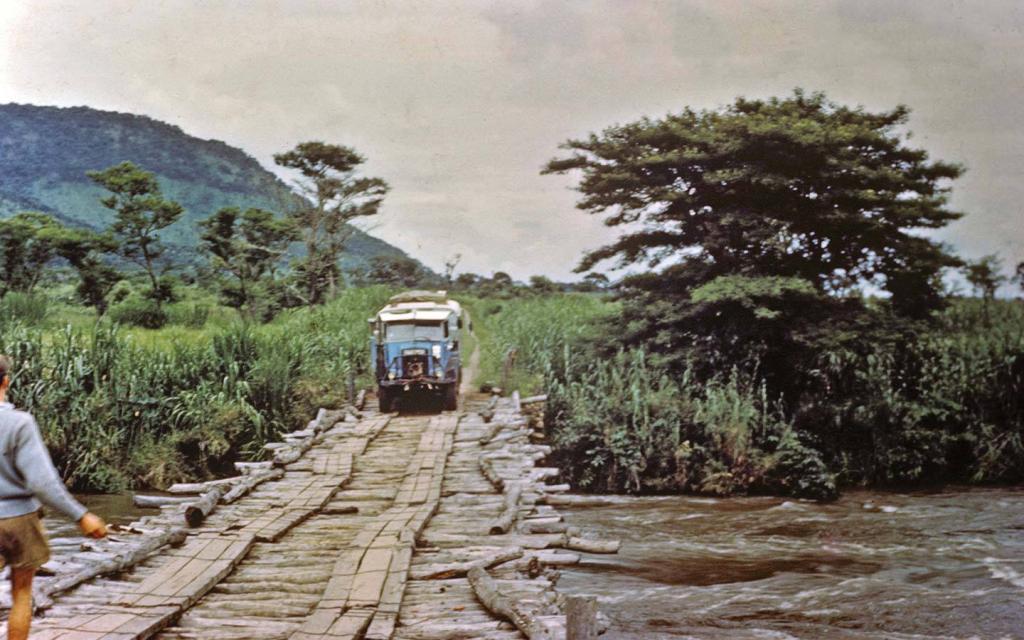
We crossed into Northern Rhodesia, which became the independent country of Zambia in 1964. In the town of Kitwe, we stayed with another de Havilland apprentice and his wife, whom we had all known in England. He was working at one of the copper mines for which the area was famous and was able to arrange a tour of one of the mines. Donning hard hats, we took one of the three-story cages to descend to 1,128 metres (3,700 feet) below ground at a rate of 1,800 feet per minute. You couldn’t help being aware of the thousands of feet of rock above you, but it really does not matter whether it is 5 feet or 5,000. It is bad news either way if it falls on top of you.
While here, we had to remove the cylinder head yet again to regrind the exhaust valves on the QLR. We had concluded that the ongoing problems might be caused by the cooling system not having a pressurised filler cap. Using a piece of wood and some rubber hose, we concocted a valve based on the Schrader valve principle as used on a bicycle tyre. The overflow was fed into a can fixed to the front of the vehicle, accessible from the cab through the opening windshield. The guy in the passenger seat would reach through and feel the weight of the can from time to time, and when he judged the can to be almost full, we would stop and return the expelled water into the cooling system.
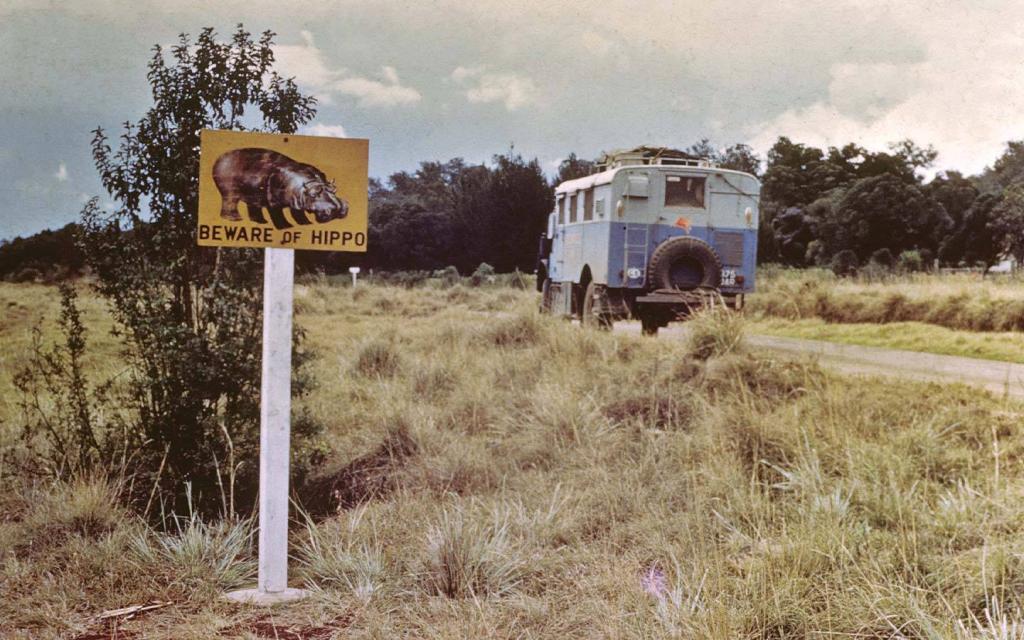
Continuing on, we visited Victoria Falls, double the height of Niagara and a 1/2 kilometre wider, its spray visible from 48 kilometres away. The African name, Mosi-oa-Tunya, translates as “the smoke that thunders,” and its majesty was undeniable. Bulawayo, on the border with South Africa, was our farthest point south. The roads in South Africa were considered better than most in Africa and therefore did not meet the definition of our expedition. From here on, we would be traveling north.
A visit to the Kariba Dam over the mighty Zambezi River proved an interesting diversion. The project was still under construction, but the immense lake behind the dam had begun to fill. What had been dubbed Operation Noah was in full swing, rescuing the thousands of animals and reptiles trapped by the rising waters on trees and marooned on temporary islands.
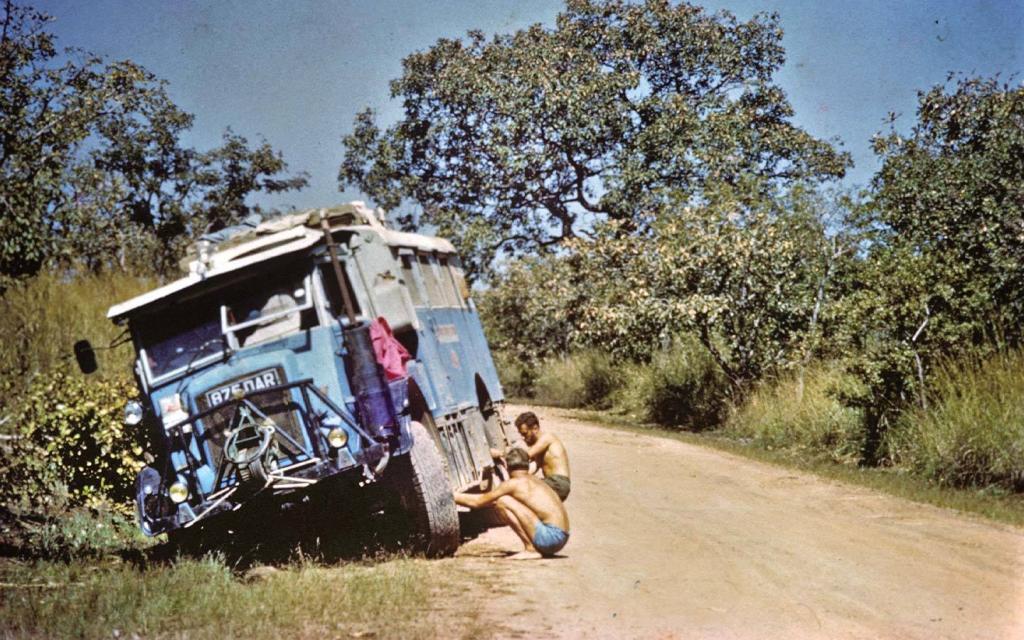
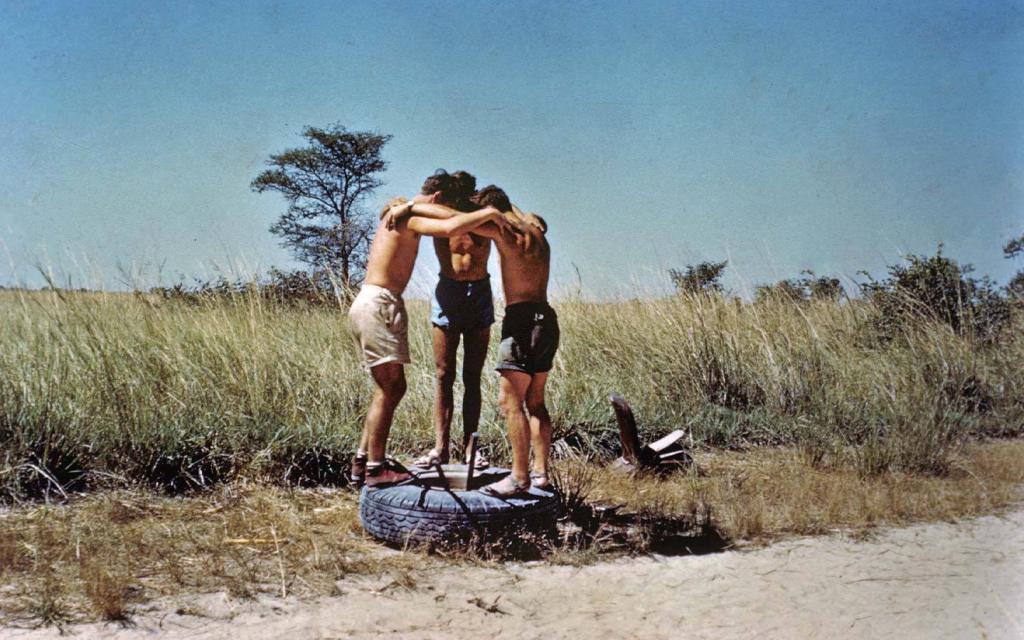
We passed through Tanganyika to Kenya, along a route I had hitchhiked one year ago. I reunited with friends in Mombassa in a buoyant moment and sailed at the yacht club. While there, the British Embassy informed Rex that his mother was dangerously ill in England. He immediately flew home, leaving Collyn and me to continue the journey. We took the road to Nairobi, continuing north to Nanyuki, right on the equator, to my father’s house on the slopes of Mount Kenya with its snow-covered peaks.
We had planned to return north across the Sahara, taking a more westerly route through Timbuktu in Mali. I had always wanted to say I had been to Timbuktu. Unfortunately, the Kano Post Office let us down, and we were unable to receive the requisite permits that had been sent to us c/o Posted Restante in Kano by Mobil in Algiers. This was maddening as we were quite sure the permits were sitting in a stack at the post office. The visas arrived, courtesy of Mobil, who we had contacted for help, on April 22. With the Sahara closing for the summer effective May 1, we left Kano the following day.
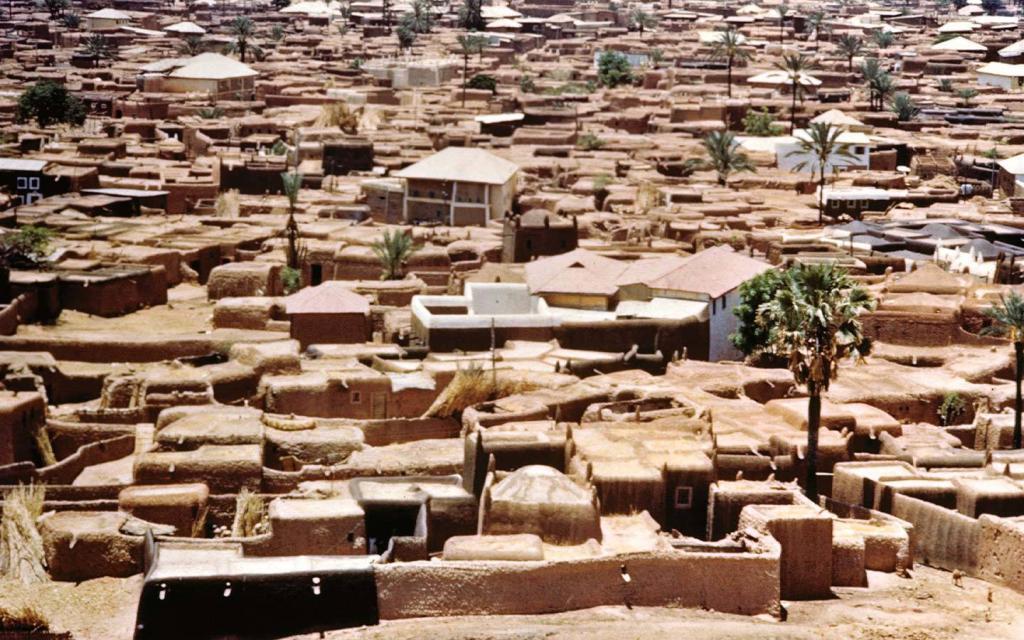
We had just made it into the soft sand area in the southern part of the desert when a series of problems with cooling water getting where it definitely shouldn’t be caused us to diagnose a blown cylinder head gasket. There was no choice but to remove the cylinder head yet again. We had run out of new head gaskets, which had led to this problem, but we had no choice but to remove the head and see what we could achieve using pre-used gaskets. The conditions were far from ideal. We were in an area of soft sand blown around by a strong wind. In the QLR, the engine was between the seats in the cab, providing some protection from the swirling sand. We selected the least worn of the gaskets, slathered it with compound, and hoped for the best. Fortunately, the fix succeeded, and we breathed again.
Despite the setback in Tamanrasset, we took a diversion into the dramatic Ahaggar mountains and visited the hermitage of Assekrem, built in 1911 by Charles de Foucauld. We had to climb the final distance on foot from where, at 9,000 feet above sea level, there was a wonderful view over the otherworldly mountains with our now-diminutive truck in the valley below.
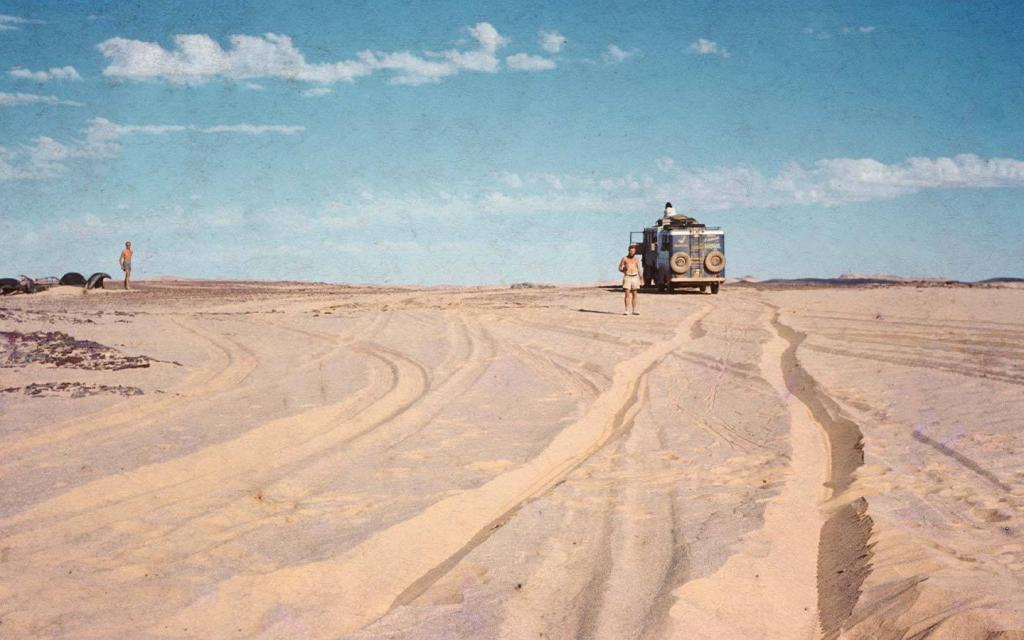
Back on the Tademaït Plateau, ferocious vibrations caused the top corners of the cab roof to part company with its side supports above the windshield, and one of the tyres developed an alarming bulge. That, along with many other parts starting to protest, such as the leaf springs and shock absorbers, left us in no doubt that the QLR was showing serious wear and tear after 24,000 miles of mostly unsurfaced roads, and we still had North Africa and the whole of Europe to cross.
Fortunately, our stalwart vehicle managed to cover the remaining distance without serious problems—even transiting the Pyrenees and the Alps with snow drifts exceeding the height of the cab. Nearly home, aboard the ferry crossing the English Channel, passengers noticed the map on the side of our vehicle and commented that we were very brave to have set out on such a feat. I just said that we only drove where people lived, and that’s the simple truth. We arrived home on June 4, 1960, after a journey of almost 25,000 miles.
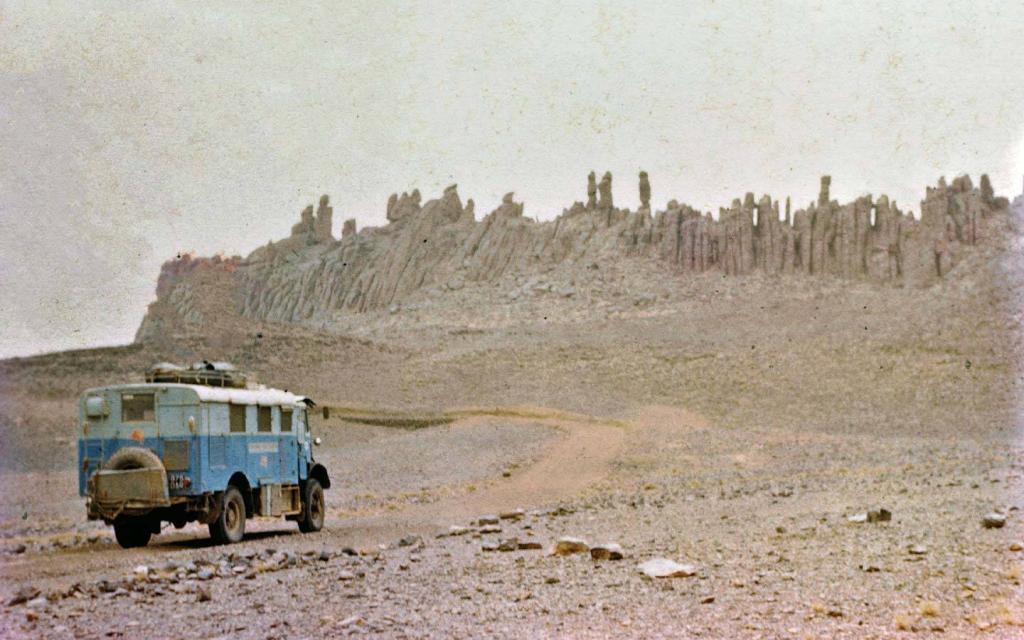
More than 60 years have passed since I stood, spellbound, beneath the stars in the Sahara Desert. Looking back, it was a unique and life-altering experience. We were all in our twenties and consequently felt somewhat immortal. Most of the countries we passed through were at the end of the colonial period. Everyone we encountered was friendly and helpful; never at any time did we feel threatened. Our timing was fortuitous. The Congo was granted its independence in June 1960 and blew up on March 26, just 12 weeks after we left it. Since then, almost every country we visited has suffered terrorist attacks of one sort or another, disrupting the lives of ordinary people. I do not believe the same trip could be safely undertaken today, but similar adventures still abound if, perhaps, slightly less ambitious. The important thing is not to be discouraged by thoughts of all the things that could go wrong. It’s always easy to come up with a thousand reasons not to do something. Seize the nettle and just do it.
This article first appeared in the 02 | 2023 edition of @overlandeurope
Author: Tony Fleming
